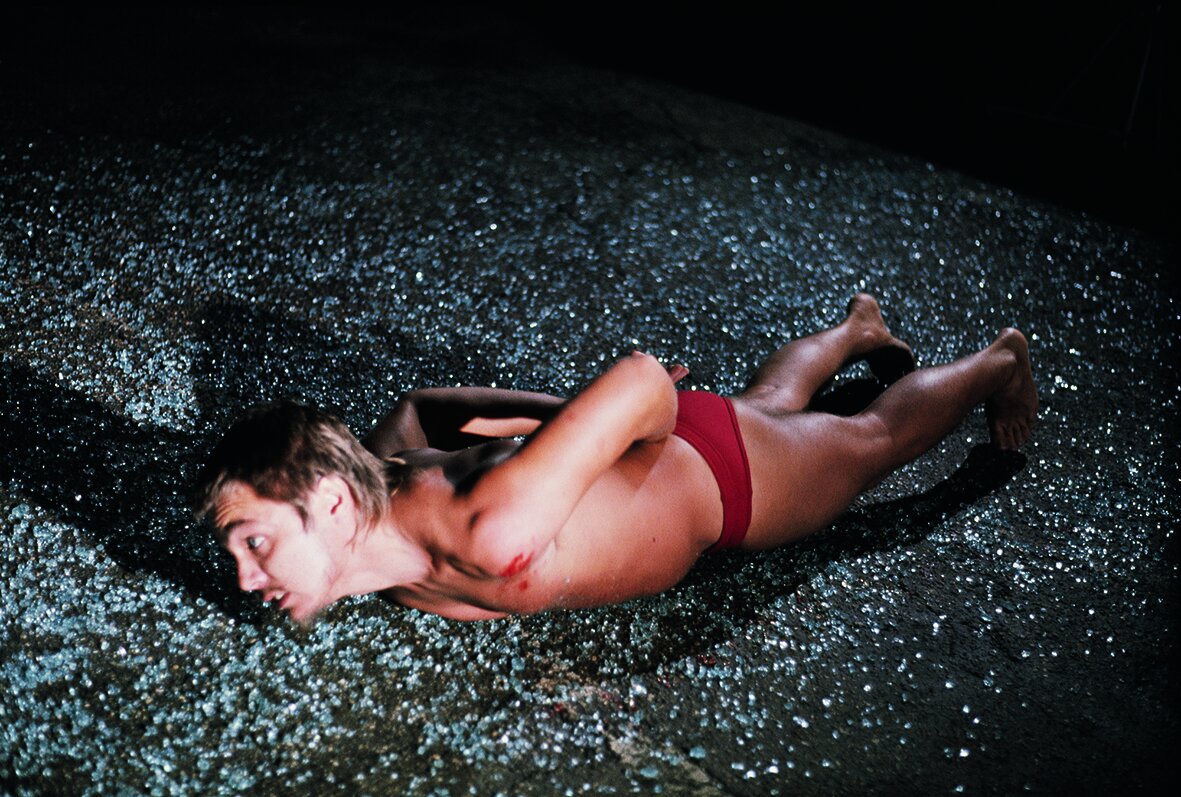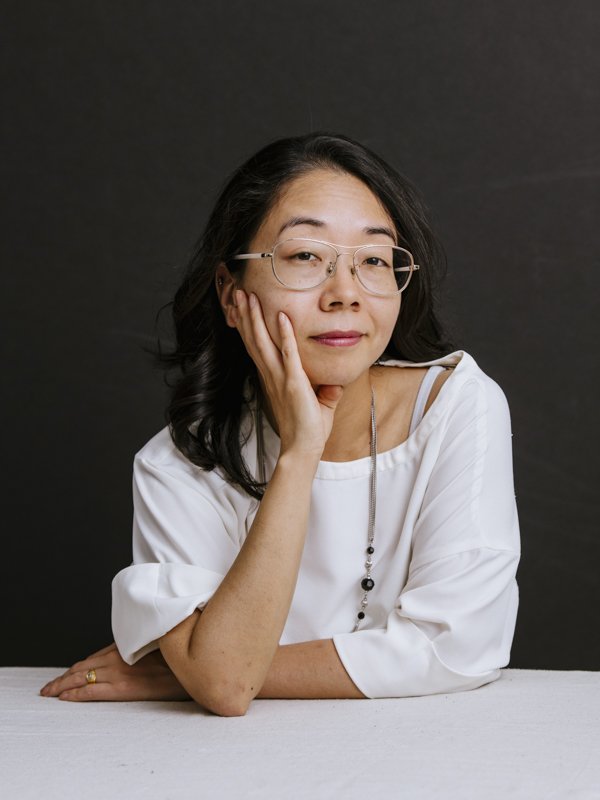
June 2023
Chris Burden
Chris Burden, Bed Piece, 1972, © 2023 Chris Burden/Licensed by the Chris Burden Estate, New York. Photo: Gary Beydler. Courtesy Gagosian
“Art is really about ideas rather than a thing. What makes it art is the materialization of the idea. I do art by acting out the idea.”
—Chris Burden
A conversation with Yayoi Shionoiri, Executive Director of the Chris Burden Estate, about a new exhibition of the artist’s seminal work at Gagosian in New York.
From his action-based works of the 1970s to the jaw-dropping technical feats of his later sculptures, Chris Burden (1946–2015) consistently challenged his mental and physical limitations, reflecting on contemporary life's surreal and precarious realities. Burden was a radical and uncompromising figure with a fierce political consciousness.
Burden earned his MFA in 1971 from the University of California, Irvine, where he studied under the conceptual artist Robert Irwin. Like Irwin—whose site-specific architectural interventions consider the effects of space and light on the viewer—Burden was interested in the staging of spectacle and the ways in which art could complicate one’s understanding of the material world.
Dan Golden: I’d love to start our conversation by learning about your background (in art and law) and what drew you to your current role as the Executive Director of the Estate of Chris Burden.
Yayoi Shionoiri: Drawing from my studies in law and art history, I have practiced law in the fine art world for the past two decades, serving various stakeholders in the art world – working as an in-house legal advisor for artist Takashi Murakami, serving as an Associate General Counsel of the Guggenheim Museum, and engaging with art & tech as the General Counsel for Artsy. It is exciting that, over time, more and more stakeholders have come to see that the law can support artistic creativity.
As the Executive Director of 1717 Studio, which runs the Chris Burden Estate and the Nancy Rubins Studio, I now have the honor of stewarding the legacies of two impactful artists – to keep each of their bodies of work in dialogue with art history’s continued development. Working with an artist's estate and a living artist is a joy and a challenge, as they allow me to think about artists and their legacies across different time horizons.
In supporting the artistic legacy of these artists, I get to work with an incredible 1717 Studio team based in Topanga, California, as well as a wonderful cohort of colleagues in the artist estate community throughout the world (including AFELL, the Artist’s Foundations & Estate Leaders’ List, and TALC, the Artist Legacy Caretakers).
Chris Burden, Cross Communication, 2023 (installation view). Photo: Gary Beydler. Courtesy Gagosian
Golden: Can you provide an introduction to Cross Communication?
Shionoiri: Cross Communication, open through June 24, 2023, is a show of Burden's early video and performance works at Gagosian Gallery's Park & 75 location in New York.
In focusing on Burden's work from the ten years between 1971 and 1980, we wanted to present works that neither Burden scholars nor contemporary art viewers have seen in recent years. This unique exhibition highlights the breadth of Burden's conceptual work early in his career.
Twenty works are presented, including relics (works Burden himself selected as the physical representation of past performances), films and videos, and two-dimensional works. The video works are being offered for sale in edition format for the first time. We also included audio recordings and other ephemeral documentation to round out the exhibition and contextualize the work.
Burden's works in this show raise themes, including the media's role in contemporary life. Burden bought airwaves to air TV Ad (1973), Poem for LA (1975), Chris Burden Promo (1976), and Full Financial Disclosure (1977), the four video works that comprise The TV Commercials 1973—1977 (1973-1977). Using public airwaves to disseminate his conceptual art—a tactical strategy well ahead of his time—he foreshadowed the contemporary world where anyone can be a content creator.
Chris Burden, Poem for LA, 1975, © 2023 Chris Burden/Licensed by the Chris Burden Estate, New York. Courtesy Gagosian
Golden: What do you think drew Burden to creating moments of danger in his early work? I’m curious why Burden eventually moved away from performance-based work to his later, large-scale sculptural work.
Shionoiri: Burden was a groundbreaking artist but a conceptual artist first and foremost. In pursuing concepts and questions, his artwork reflects efforts to actualize these ideas. As a result, his artistic output is quite varied over the years – including performance and the use of his body in the early part of his career, drawings and artist books to share his conceptual vision, and site-specific installations of architectural proportions as the years passed.
Among the many throughlines of Burden’s layered practice is his exploration of the scale of the body in relation to its environment. At times the subject body was his own, as reflected in his early performance works such as Back to You (1974), where viewers entered an elevator and were instructed to engage with Burden by pushing pins into his body during the elevator ride. Still other times, the subject bodies are those of the viewers of his larger sculptural works, such as 40 Foot Stepped Skyscraper (2011), a skyscraper made of 250,000 stainless steel Erector set parts, as seen most recently at Frieze LA earlier this year.
Chris Burden, Through the Night Softly, 1973, © 2023 Chris Burden/Licensed by the Chris Burden Estate, New York. Photo: Charles Hill. Courtesy Gagosian
Golden: How would you position Burden in relation to other artists/movements of the period?
Shionoiri: No artist creates in a vacuum, of course, and Burden was no different in the sense that new movements were emerging in artistic practice all around him. Dr. Thomas Crow's most recent seminal text, The Artist in the Counterculture: Bruce Conner to Mike Kelley and Other Tales from the Edge, tells a very compelling story about how California artists of that time were part of and influenced by the zeitgeist of the countercultures, using their bodies as the subject of their practice, while being galvanized by the world around them and the injustices they observed and experienced. Burden is discussed within this larger arc of artistic experimentation, where LA — as a place and a concept — figures heavily as both subject and environment in many artists' work, including Burden, but also Mowry Baden and Hirokazu Kosaka.
Portrait of Chris Burden © Peggy Jarrell Kaplan, 1981. Courtesy Ronald Feldman Arts and Gagosian
Golden: What is Burden's influence and impact on the contemporary art landscape?
Shionoiri: Throughout his artistic practice, Burden consistently identified pervasive structures and attempted to overcome their limitations – whether these were social constructs, relationships of power, or the way the economy worked. Burden's conceptual art continued to pose questions and challenge norms. I believe that Burden's works remain as relevant today as ever, as his art helps viewers reflect on contemporary life's inherent complexities and contradictions.
Golden: Lastly, please share something about Chris Burden that might surprise people to learn about him.
Shionoiri: Burden was a curious and inquisitive person, and as a result, he became an avid collector — of ideas, a community, even pets, and objects. In the archives, we have an incredible trove of items that Burden collected over the years, some of which served as inspiration for his artwork, including massive amounts of model train sets in various scales, complete with figurines and houses, some of which would form the basis for his later work to examine the architectural and transportation structures that have come to shape our world.
Yayoi Shionoiri
Yayoi Shionoiri serves as Executive Director of the Estate of Chris Burden and the Studio of Nancy Rubins, where she is responsible for stewarding Burden’s art historical legacy and promoting Rubins’s artistic practice. She is a published specialist in art law.
Chris Burden
Cross Communication
Gagosian
Park & 75, New York
March 24—June 24, 2023





